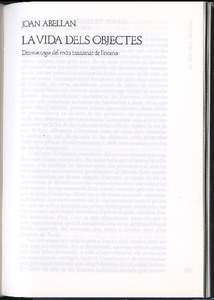| dc.description.abstract | <p>The human being maintains a specially intense relationship with everything concerning time and space. The natural surrounding as well as the inanimated universe which surround him are perfect mute interlocutors, cause and effect of a great part of his activity. The structural and functional complexity of the environment has in its theatrical reproduction almost the same importance as human behaviour.</p>
<p>Theatrical practice has traditionally created guild divisions between setting, <em>atrezzo </em>and tools, corresponding to more or less systematical groups of objects, according to their size and function, within a technical judgment which, during the performance, separates the objects introduced by the characters themselves from those placed on the stage by other means. It could be said that this mechanical tradition arisen from the practice is better, in some of its systematization aspects, than many present theories about objects.</p>
<p>This work, under six epigraphs —«The Surrounding: from the Social Context to the Scenic Context», «Scenic Function of Objets», «Recognition of the Dramatic Role of Objects», «The Private Object», «The Aleatory Sign» and «Scenic Obligations»—, examines dramatically the representation of the social surrounding, according to the different scenic functions of objects and proposes a scheme of the working of the dramatic role of objects, from the study of the influence of personal accessories on the dramatic action in five recent Catalan adaptations for the stage: Guimerà's <em>Maria </em><em>Rosa, </em>staged by John Strasberg; Brossa's <em>Cavall al </em><em>fans, </em>staged by Jordi Mesalles; Genet's <em>El balcó, </em>staged by Lluís Pasqual; Labiche's <em>El més feliç dels tres </em>and Wilde's <em>La </em><em>importància de ser Franc, </em>both staged by Jaume Melendres.</p> | |


